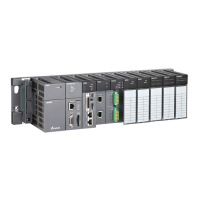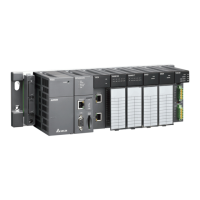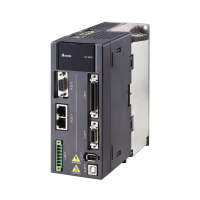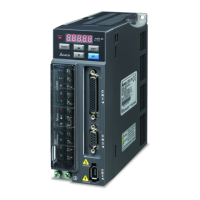Chapter 4 Instruction Structure
4-11
4. The program in the function block FB0
5. Declare the variable in the program organization unit (POU).
The data type of CVar1 should be COUNTER.
6. Call the function block FB0 in the program organization unit (POU).
7. The program in the program organization unit (POU)
Network 1: When StartBit[0] is ON, the address of C0 is transmitted to CPoint1 in FB0.
When VarBit1 in FB0 is ON, CPoint1 (C0) is ON.
Network 2: When StartBit[1] is ON, the address of CVar1 is transmitted to CPoint1 in FB0.
When VarBit1 in FB0 is ON, CPoint1 (CVar1) is ON.
4.7 Pointer Registers of 32-bit Counters
ISPSoft supports the function blocks. If users want to use the 32-bit counter in the function
block, they have to declare a pointer register of the 32-bit counter in the function block. The
address of the 32-bit counter is transmitted to the pointer register of the 32-bit counter when
the function block is called.
When the variable declaration type is VAR_IN_OUT, and the data type is HC_POINTER, the
variable is the pointer register of the 32-bit counter. The value in the pointer register of the
32-bit counter can refer directly to the value stored in the device HC or in the variable which is
the counter in ISPSoft.
Users can declare 8 pointer registers of the 32-bit counters in every function block. The range
is HCR0~HCR7.
If users want to use an instruction in the function block, and the 32-bit counter is supported
among the operands, users have to use the pointer register of the 32-bit counter.
Example:
1. Establish a program organization unit (POU) in ISPSoft first.

